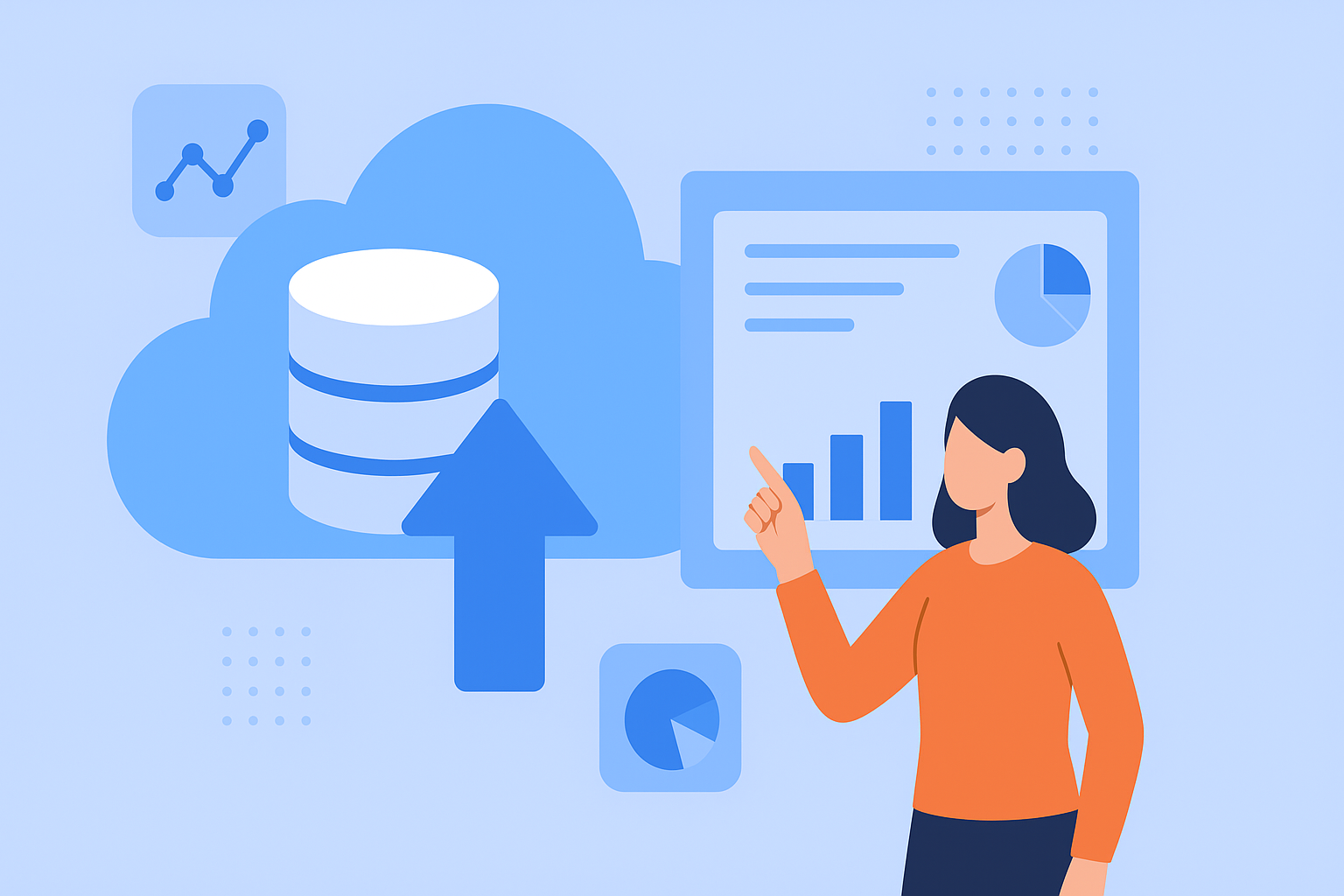Dreamforce 25: Major Data Cloud Updates

Introduction: Dreamforce 25
Dreamforce 2025, Salesforce’s annual flagship event, once again proved to be the epicenter of innovation in the world of customer relationship management, artificial intelligence, and data connectivity. This year, one of the most talked about topics was the Salesforce Data Cloud—a unified, intelligent platform designed to help organizations harness the full power of their data in real time. Recent Dreamforce 25 announcements show that Salesforce is doubling the capabilities of the data cloud, embedding AI deeper into the data layer, improving interoperability, and empowering businesses to create unprecedented levels of connected customer experiences.
Below is an in-depth look at the key Salesforce Data Cloud updates unveiled during Dreamforce 2025 and what they mean for enterprises navigating the future of data-driven growth.
Table of Contents
1. Unified Data at Scale: Data Cloud Becomes the Foundation of the Salesforce Platform
At the heart of the Dreamforce 25 announcements was the formal integration of the data cloud as the underlying data platform for the entire Salesforce ecosystem. While previous iterations allowed individual Salesforce products like Marketing Cloud, Sales Cloud, and Service Cloud to connect to Data Cloud, the latest update cements Data Cloud as the core data fabric that powers every Salesforce application.
This means that all Salesforce applications now natively share a single source of truth. Customer data—whether it originates from CRM, web interactions, emails, IoT devices, or third-party systems—flows seamlessly through the data cloud. As a result, businesses can now create real-time, 360-degree views of their customers without complex integration or ETL pipelines.
In practical terms, marketers can see purchase history in real time, service teams can get up-to-the-minute issue updates, and sales teams can instantly identify cross-sell opportunities. This connection also greatly speeds up AI-driven insights, enabling Einstein AI to make predictions using current data instead of old, processed data.
2. Data Cloud + Einstein 1: The Next Generation of AI-Driven Personalization
Dreamforce 25 was trustworthy AI grounded in data integrity. Salesforce Announced tighter integration between the Einstein 1 platform and data cloud, enabling organizations to train and deploy AI models directly on their consolidated datasets.
This combination creates AI-ready data, meaning the data cloud automatically organizes and updates company data—getting rid of duplicates, fixing identities, and making sure it follows rules—so it can be used in Einstein AI for training or making predictions.
Some of the unique AI-powered capabilities include:
- Einstein Copilot for Data Cloud: A conversational AI assistant that helps teams query, understand, and manipulate data in natural language. Business users can now ask, “Show me the customers that are likely to churn next month,” and Einstein Copilot generates the query and delivers actionable insights in seconds.
- Predictive Segmentation and Dynamic Audiences: AI models automatically identify emerging audience clusters and adjust marketing segments in real time based on behavioral cues.
- Automated data mapping: Using generative AI, Data Cloud can automatically map new data sources, reducing setup time for integration by up to 80%.
Together, these improvements make AI personalization faster, more intuitive, and more grounded in accurate, real-time data.
3. Native Data Cloud for All Salesforce Clouds
In earlier years, the data cloud functioned somewhat as an add-on. Dreamforce 25 represents a transformation: Data Cloud is now built natively into every Salesforce cloud, including Sales, Service, Marketing, Commerce, and Overview.
For example:
- In Sales Cloud, the data cloud analyzes customer behavior across touchpoints to present next-best-action recommendations.
- In Service Cloud, agents receive context-rich case histories powered by aggregated customer data.
- In the Marketing Cloud, real-time data activation allows for adaptive campaign orchestration—where audience segments evolve automatically as customer data changes.
- At a glance, analysts can visualize Live Data Cloud data without exporting or duplicating datasets.
This native approach eliminates silos and allows organizations to build end-to-end workflows from insight to engagement without leaving the Salesforce ecosystem.
4. Data Cloud Connectors: Expanding the Ecosystem
Another major update at Dreamforce 25 is the expansion of Data Cloud Connectors, a library of prebuilt Integration that allows organizations to connect external data sources to Salesforce in minutes.
New connectors announced include:
- Databricks and Snowflake for advanced data analysis and sharing.
- SAP, Workday, and ServiceNow for enterprise operations data.
- AWS S3, Google BigQuery, and Azure Synapse for cloud data storage synchronization.
These connectors use Zero-ETL integration, which means data doesn’t need to be copied or converted before it can be used in Salesforce. This ensures freshness of information and reduces infrastructure costs. Zero-ETL. The approach is quickly becoming one of Salesforce’s most strategic advantages, enabling true real-time data federation across ecosystems.
5. Data Cloud for Industries: Tailored Solutions for Specific Verticals
Salesforce also announced industry-specific enhancements to Data Cloud, designed to meet the compliance, structure, and data challenges of different sectors.
Some key examples include:
- Financial Services Cloud: Real-time transaction monitoring to detect fraud, with AI-powered insights to improve client engagement.
- Healthcare Cloud: Unified patient profiles that integrate medical and allied information, enhancing care coordination.
- Manufacturing Cloud: Predictive maintenance models that use IoT and manufacturing data to anticipate machine downtime.
- Retail Cloud: A personalized recommendation engine that combines online and in-store data to optimize promotions.
These industry-ready solutions significantly accelerate time-to-value by providing prebuilt data models, connectors, and compliance configurations.
6. Trust and Governance: Data Cloud’s New Security and Compliance Framework
As data privacy regulations tighten globally, Salesforce places a strong emphasis on trust, compliance, and governance. Dreamforce 25 introduced a new data governance layer within the data cloud that enables granular control over data lineage, access, and consent.
Key features include:
- A consent management API that allows real-time enforcement of customer data preferences across channels.
- Data provenance dashboards give administrators a visual trace of where data originated, how it was transformed, and how it’s being used.
- AI policy control, ensuring that data used for model training aligns with organizational and regulatory standards.
This “trust-first” approach underscores Salesforce’s commitment to responsible AI and ethical data use—an important differentiator as AI adoption accelerates.
7. Real-Time Activation and Event Streams
Dreamforce 25 also demonstrated how Data Cloud’s real-time event streams enable instant activation of data across all Salesforce applications. Businesses can now react to customer actions—whether it’s a website visit, a support ticket submission, or a retail transaction.
The Event Streams architecture allows developers to set up trigger-based automation that responds in milliseconds. For example:
- A customer browsing high-value products can trigger a personalized chat prompt from Einstein Copilot.
- A delayed payment can automatically signal a Service Cloud case or send a proactive message to the customer to retain.
This shift from static data to continuous, event-driven intelligence represents the biggest technological leap for Salesforce.f Lightning.
8. Developer Empowerment: Data Cloud SDK and Open APIs
Salesforce introduced the Data Cloud SDK, which gives developers and ISVs deeper control over data ingestion, transformation, and activation. The SDK supports open standards such as GraphQL and JSON, making it easy to integrate with existing data pipelines.
Open Data APIs let developers embed data cloud capabilities into custom applications or external systems, enabling entirely new use cases like partner dashboards, customer portals, and embedded analytics.
By blending flexibility with governance, Salesforce is turning Data Cloud into not just a CRM data engine but a complete data operating system for the enterprise.
9. Pricing and Packaging Evolution
Recognizing that data usage varies widely across organizations, Salesforce introduced usage-based pricing for Data Cloud. Customers now pay based on data volume and active records instead of flat licenses. This makes it easy for both small businesses and large enterprises to effectively adopt the data cloud.
In addition, Salesforce announced new starter tiers for Data Cloud—with key AI and automation features to help organizations quickly pilot use cases without heavy upfront investment.
10. The Bigger Picture: Data Cloud as the Heart of the AI CRM
Dreamforce 25 made it clear that Salesforce’s future vision revolves around data, AI, and CRM. With the data cloud now serving as the central nervous system of the entire platform, every customer interaction, transaction, and engagement can be understood and optimized in real time.
The combination of Einstein 1, Copilot, and the data cloud transforms Salesforce into an intelligent, self-improving ecosystem—where data isn’t just stored but actively powers decision-making, automation, and personalized experiences.
Key Takeaway:
Dreamforce 2025 was more than just a showcase of new features—it was a statement of direction. Salesforce is evolving from a set of applications to a unified, AI-powered data platform. The data cloud is at the core of that evolution, powering intelligent experiences that are real-time, connected, and deeply human.
For businesses, this means the ability to finally bridge the gap between fragmented data and meaningful insights—turning every byte into business value and every customer interaction into a growth opportunity. The data cloud era has officially arrived, and Dreamforce 25 proved that Salesforce isn’t just keeping pace with the AI revolution—it’s defining it.

